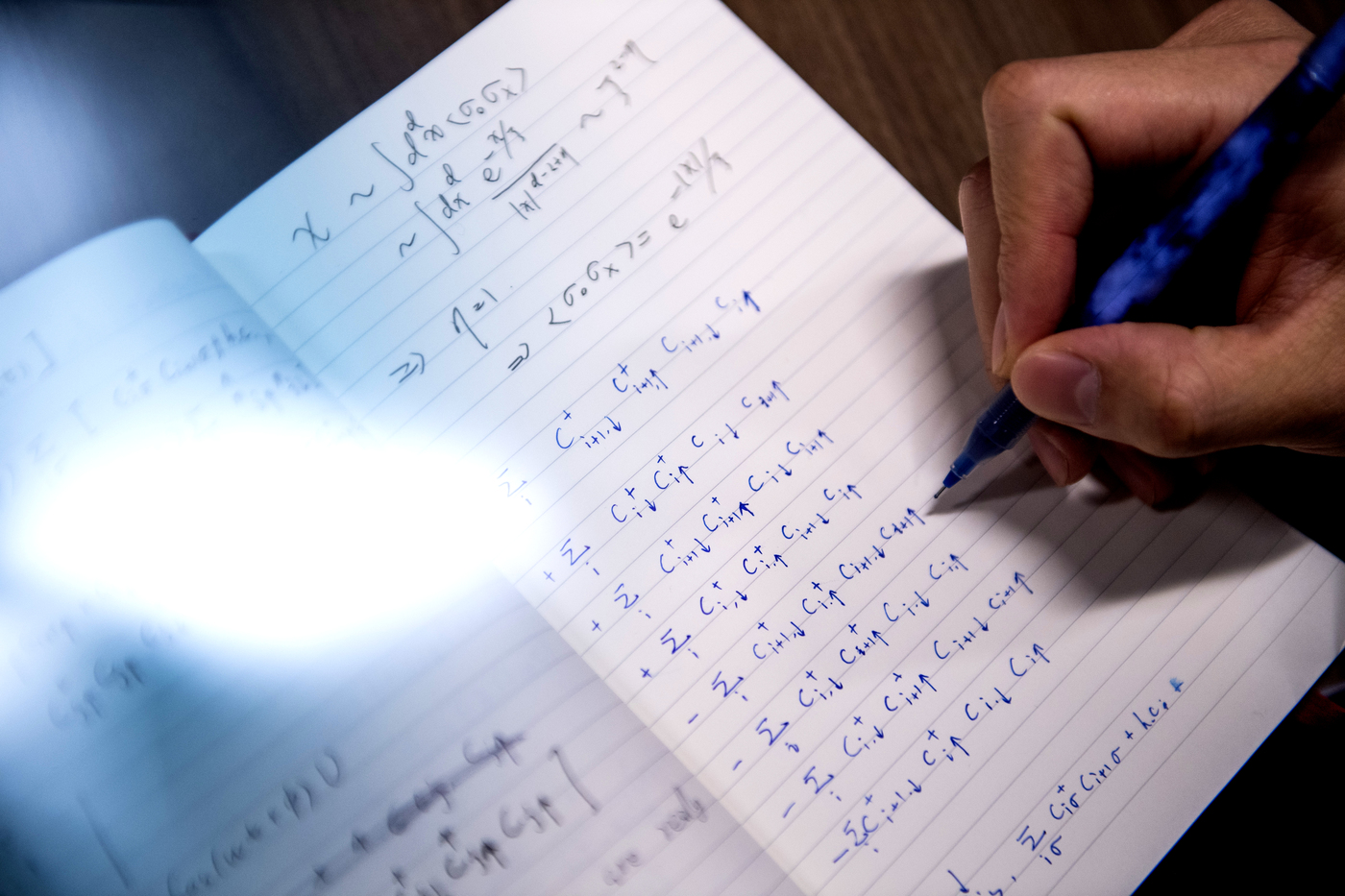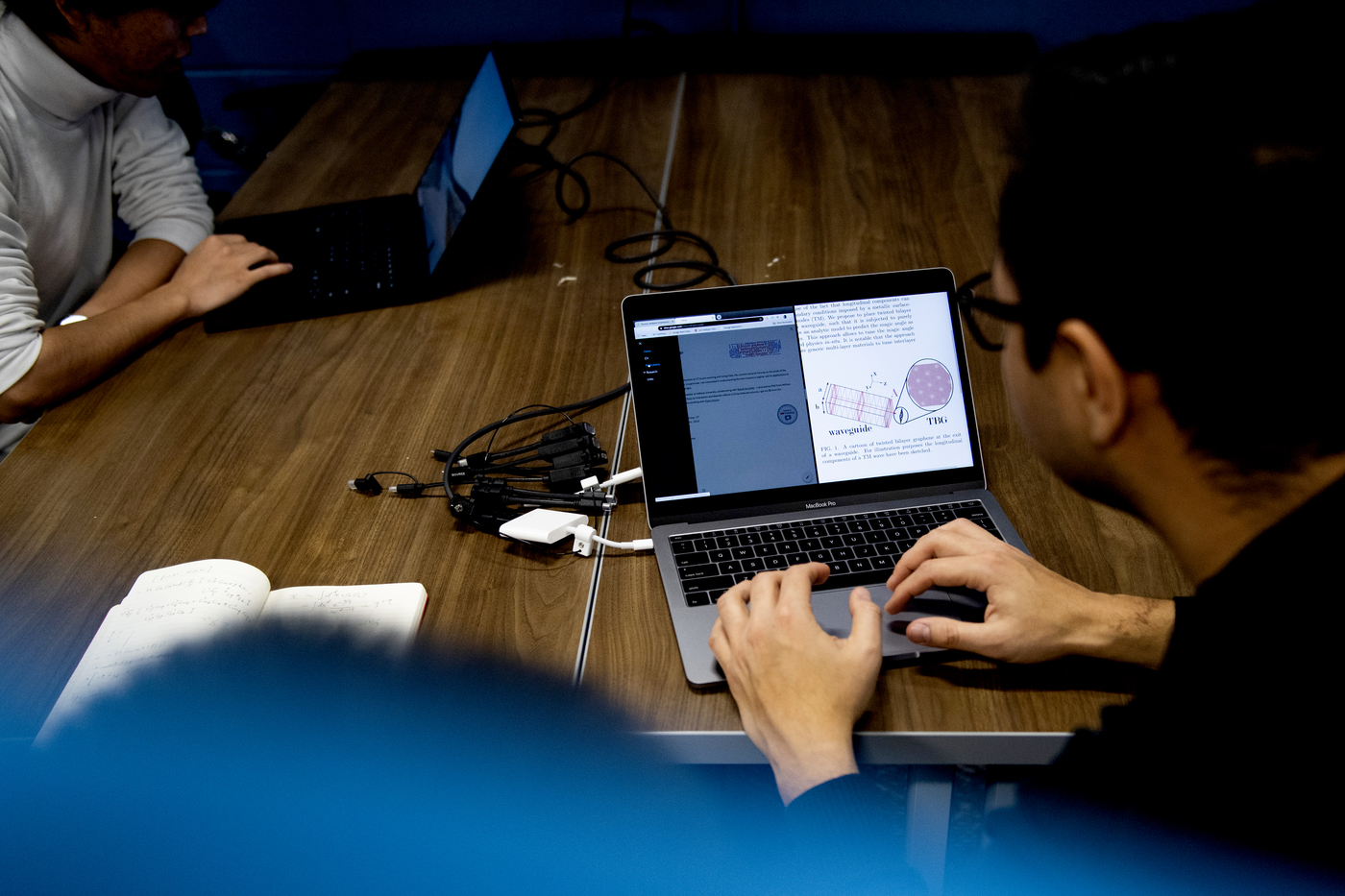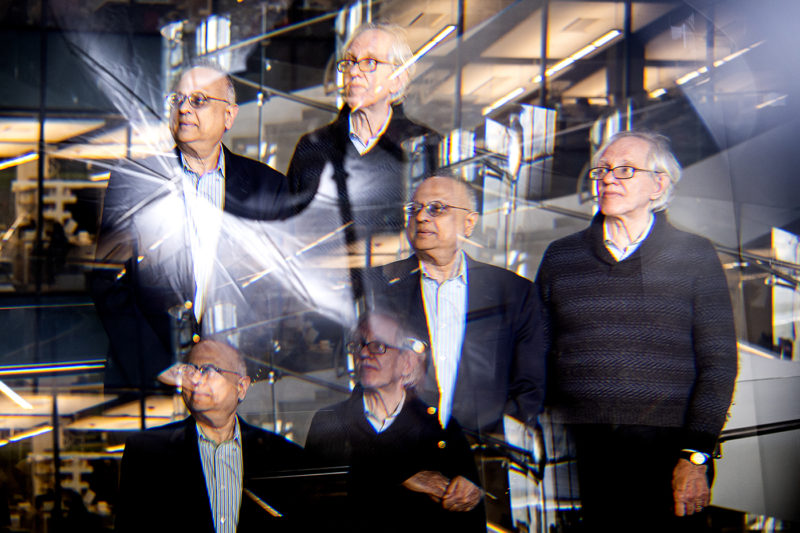One of the most vivid memories Martin Rodriguez-Vega has of his hometown of Comala—located in the western coastal state of Colima, Mexico, and famous for its all-white buildings—is seeing flocks of birds flying into beautiful sunsets.
Rodriguez-Vega recalls watching the birds swooping in the sky as if dancing harmoniously—each bird flying adroitly to form large and intricate patterns in the air.
At the time, the interaction between those birds was simply something upon which Rodriguez-Vega liked to gaze. Later, as a doctoral student in theoretical physics, he came to understand that the birds’ behavior was an example of a complex phenomenon scientists call emergence: patterns or behaviors that form or emerge thanks to the dexterity of the individual parts of a dynamic system, such as birds in a flock.
Working collectively, these parts give rise to a type of group behavior that would be impossible to generate without the coordinated dynamics of its individual components.
“The birds want to stay with the group together, but they don’t want to be too close together because otherwise they collide,” he says. “So there’s this competition of wanting to be close, but not so close, which leads to these emergent patterns. It’s quite interesting.”
More than a decade later, Rodriguez-Vega, now a postdoctoral research fellow at Northeastern, is studying a similar type of behavior—except that instead of analyzing the dynamics of bird flight, he and a group of physicists are studying, modeling, and testing the collective behavior of subatomic particles. Their goal is to explore the hidden properties of quantum materials, which are known to display exotic qualities that emerge from the arrangement of electrons.


“The thrill is about the deeper meaning.”
At the subatomic scale, electrons are responsible for the conduction of electricity in all materials. But by stimulating quantum materials with specialized laser pumps or ultra-cold temperatures, scientists can make electrons rearrange collectively, giving those materials new properties.
Eventually, scientists hope to use their knowledge of quantum materials to transform technology, helping to produce faster electronics, better supercomputers, and smarter communication devices—all of which rely on the behavior of electrons.
One of the most striking examples of emergent quantum properties is superconductivity: the ability of materials such as aluminum to conduct electricity perfectly, and at ultra-fast speeds, under extremely frigid temperatures.
“A single electron would never be able to present this type of behavior,” Rodriguez-Vega says. “But with every electron together, [the material] can transition into a new state in which all the electrons can move together through it without resistance.”
The impacts of superconductors and other quantum materials are likely to drive a technological revolution. And Rodriguez-Vega wants to be part of it.
In addition to developing theories that predict and explain the behavior of potential quantum materials, Rodriguez-Vega works with researchers to conduct experiments and test his theories in a lab. By shooting the materials with special lasers to probe their properties, the researchers hope to find easier and cheaper ways to harness the power of quantum materials.
Recently, Rodriguez-Vega was part of a team that used that technique to discover new ways in which magnetite, a mineral that scientists have long used to study magnetism, can turn from a metal that transports charge into a material that stops charge.
That ability to combine theory with experiments is what drives Rodriguez Vega to devote his life to research. The most thrilling part of being a physicist, he says, is seeing equations he has written accurately predict the outcome of an experiment.
“The thrill is about the deeper meaning, because what you’re writing on the paper and solving in your computer is just your interpretation of what could be going on with nature in general,” he says. “That gives you this sense that things really work, that perhaps math is really the language of nature. It’s really amazing.”
“You need someone else to help you learn.”
Rodriguez-Vega grew up the son of two accountants in a small, agricultural town of Mexico, and says his parents played an integral role in opening the doors for him to pursue a life in physics. When he first applied to graduate school in the United States, the fees for language and admission tests amounted to nearly two months of his parents’ salary, he says.
“At the time, they did everything in their possibility for me to do the tests, and then, when I was accepted, to gather the money to get the plane tickets, and get the security deposit for a place to live,” he says. “That was pretty incredible on their side.”
Rodriguez-Vega also credits his career as a theoretical physicist to the support and mentorship of scientists such as Paolo Amore, his professor at the University of Colima, and Enrico Rossi, who took Rodriguez-Vega under his wing when he migrated to the U.S. to pursue a doctoral degree at the College of William & Mary in Williamsburg, Virginia.
“When you live in a small town, a little disconnected from the notion of science, it’s quite common for people to think that if you’re going into one of these careers, the only possible outcome for you is to be a schoolteacher,” Rodriguez-Vega says. “The idea of being able to get an education, to devote your life and try to create knowledge to answer some questions out there is not something that was on my mind.”
Rodriguez-Vega thinks mentors in science are important not only because of the technical knowledge they pass on to their students, but because they can help budding scientists who face a huge wall of challenges and knowledge to break into the scientific community.
A career in science is much more manageable, he says, when you have somebody sitting on top of that wall, giving you a hand to climb over it.
“The knowledge that [scientists] accumulated at this point is really large,” he says. “At least for me, it was quite easy to feel overwhelmed by the complexity of things.”
As part of the Quantum Matter and Correlated Electron Theory Lab, Rodriguez-Vega tries to dedicate as much time as possible to young scientists who need it, even if that entails discussions that have nothing to do with physics. Sometimes, he says, students just need to chat about their lives in general, as well as the challenges of graduate school.
Gregory Fiete, a professor of physics who leads the lab, says that thanks in large part to Rodriguez-Vega, his students are developing new skills in a cutting-edge area of physics. Rodriguez-Vega has been training them to use machine learning techniques to scan large sets of data in order to spot potential quantum materials.
Fiete also recognizes the importance of helping students advance, and says Rodriguez-Vega is the epitome of a model scientist. He’s a capable scientist who can do the technical aspects of the work, Fiete says—the numerical and analytical parts—but he’s also a reliable mentor for junior researchers in the group.
“Ultimately, everything challenging that any person undertakes requires help and assistance in life, whether you are a dancer, a musician, a scientist, whatever you might be,” Fiete says. “You need someone else to help you learn and someone else to bounce ideas off of, or maybe be inspired by.”
Those relationships between mentors and students are essential for the advancement of science, Fiete says, and for the democratization of the research enterprise worldwide.
“One of the things that I find inspiring about Martin is just how far he has come,” Fiete says. “Not everyone has the same starting point in life, and he had to overcome a lot of obstacles in early stages to get where he is today.”
For media inquiries, please contact media@northeastern.edu.
"really" - Google News
October 27, 2020 at 02:24AM
https://ift.tt/31K9OES
Is math really the language of nature? This physicist is on a quest to find out. - News@Northeastern
"really" - Google News
https://ift.tt/3b3YJ3H
https://ift.tt/35qAk7d
Bagikan Berita Ini















0 Response to "Is math really the language of nature? This physicist is on a quest to find out. - News@Northeastern"
Post a Comment